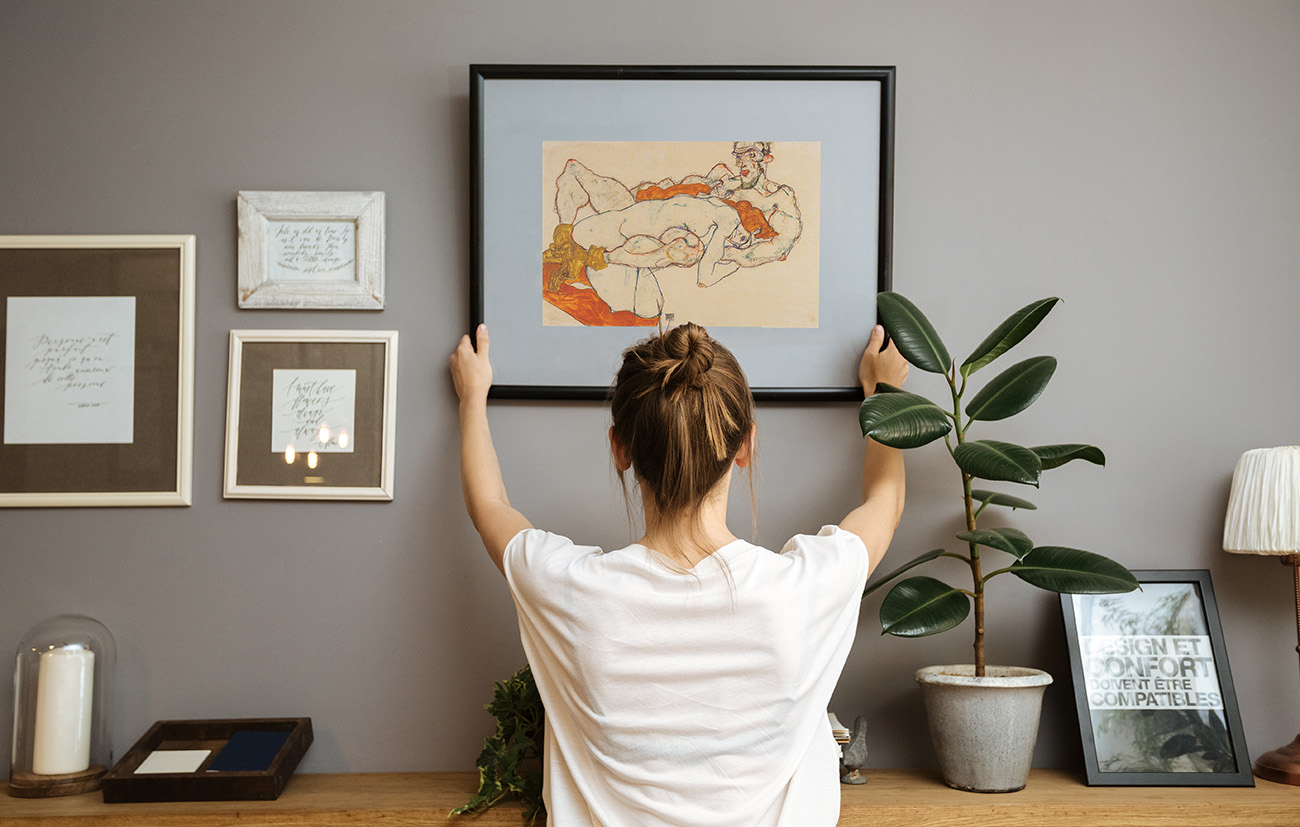Glass
The suspension of images requires some preliminary considerations, not only in terms of the space or the choice of the frame but also of the glass.
float glass
Float glass is a simple 'normal' picture frame glass. The float glass process has offered the possibility of endless continuous production since the 1960s. Liquid glass is poured into liquid tin in an endless belt and then cooled. Float glass is the basic or flat glass for almost all areas. For the glazing of artworks, the thickness of 2 millimeters is used.
antireflective glas
Based on clear float glass, the anti-reflection glass is an anti-reflective picture glass with reduced reflections. It has a thickness of 2 millimeters and a light transmission of about 91 percent. The protection against harmful UV light is about 45 percent. The anti-reflective glass is the cheapest non-reflective glass version.
Clarity AR70 / AR92
The Clarity AR92 and Clarity AR70 glasses are particularly well-suited for deep framing when used with a passe-partout. In every glazing, the preservation of the colors of the artwork plays an essential role. Again, these glasses show advantageous properties because they are suitable for image framing of art, without affecting the color fastness. This preserves clear colors and high contrasts. The thickness of 2 millimeters ensures a long service life. The glasses are anti-reflective, easy to clean and have a light transmission of 98 percent. Their protection against UV light can also be seen: Clarity AR92 protects 92 percent and Clarity AR70 protects 70 percent from the harmful UV light.
TruVue Museum Glass
Perfect colors and contrasts through the 97-percent transparency, the art lovers reach with the TrueVue Museum Glass. Convincing is an impressive clarity, the colors and contrasts are authentically preserved. This glass is also anti-reflective, has less than 1 percent residual reflection and offers protection from UV light of 99 percent. With a thickness of 2.5 millimeters, it is 40 percent more resistant and has a lower risk of breakage than comparable products. TrueVue Museum Glass is durable and easy to clean with its smooth surface.
TrueVue Optium Museum Acrylic
Recommended for framing precious art, TrueVue Optium Museum Acrylic is one of the most trusted and highly valued acrylic glasses. It is a glass of the highest standards and is used in famous museums such as the Rijksmuseum in Amsterdam. TrueVue Optium Museum Acrylic is recommended for highly sensitive materials, heirlooms and irretrievable objects. It offers protection against destruction and contact in highly frequented areas because, at a thickness of 3 millimeters, it has the highest stability. The light transmission of 98 percent and the UV protection of 99 percent also get the colors and contrasts in the highest brilliance. TrueVue Optium Museum Acrylic not only impresses with this impressive clarity but is also anti-reflective and has less than 1.6 percent residual reflection. Only half as heavy as normal glass, it has a favorable weight and allows flexibility in the case of the suspension. Another advantage is the long-term protection by a protected coating process. TrueVue Optium Museum Acrylic is antistatic, durable and easy to clean. Its extreme scratch resistance is achieved by a special coating.
Of course, glazing can only be selected with a decorative frame.




